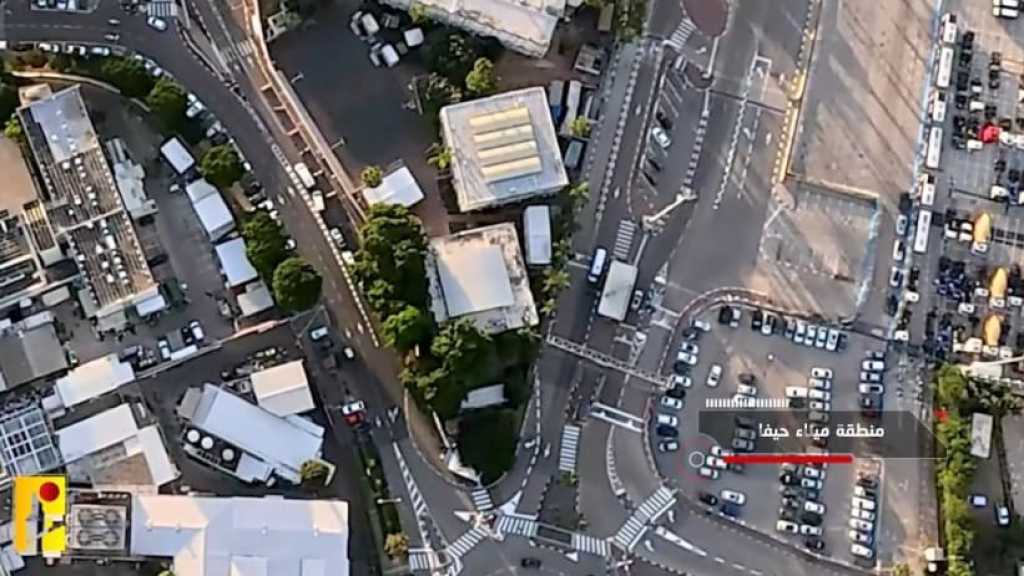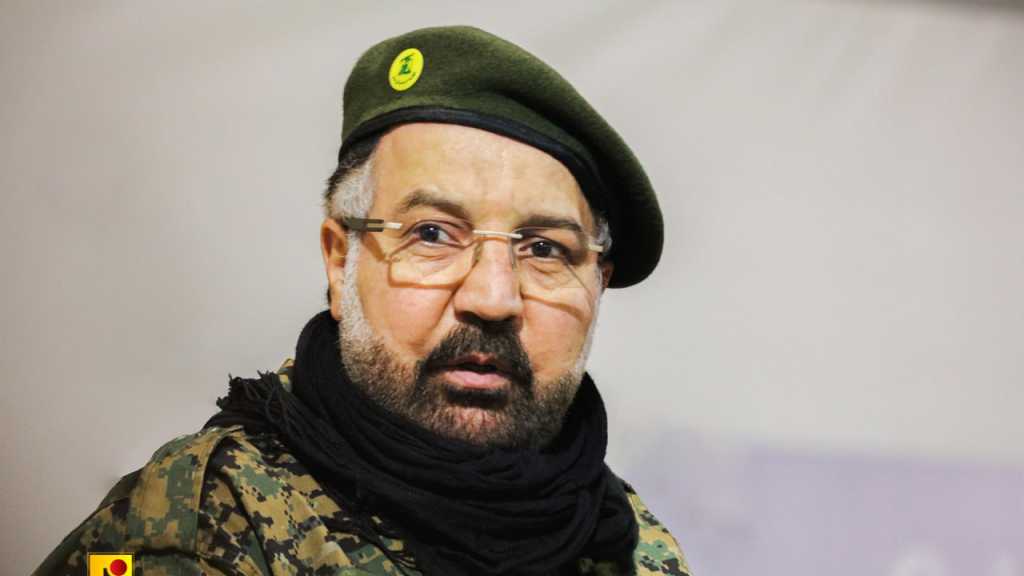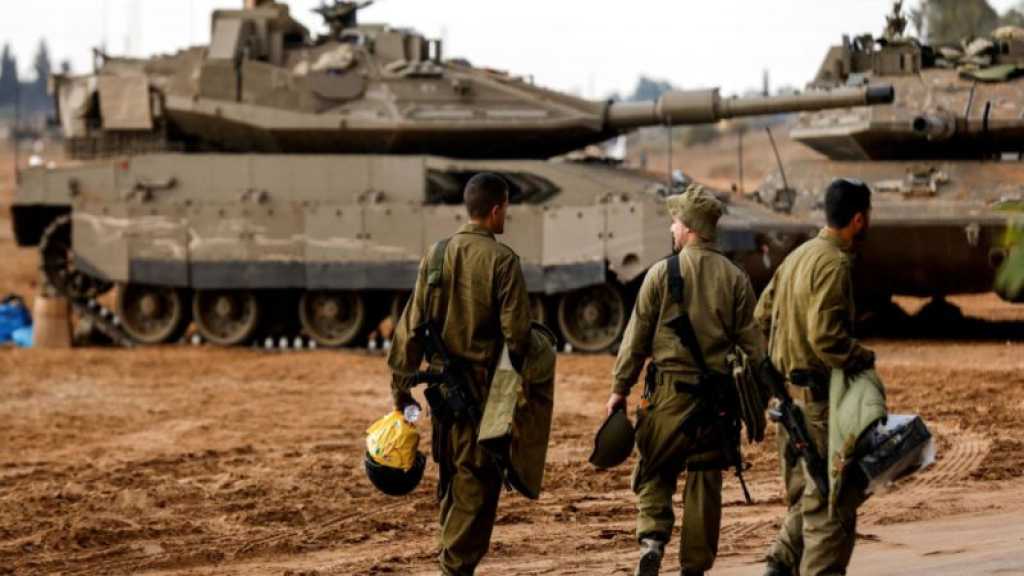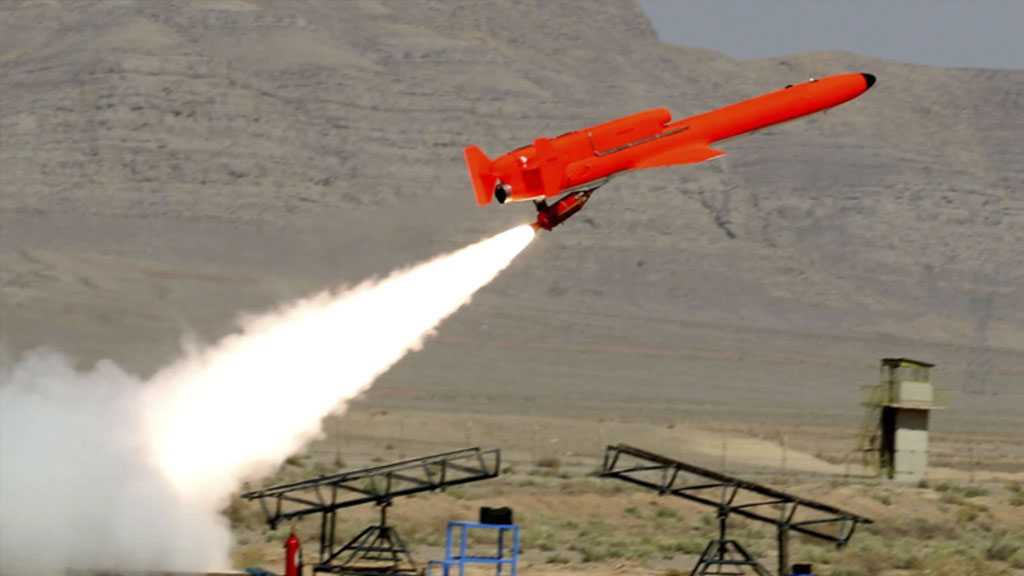Ashura in Dahye: ’We came with love... and with the Sayyed’
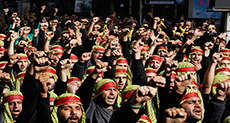
Firas Khalife
The thirty year old man can only move his left hand, as his right hand was injured two months ago when he was performing his "Combat duty" close to the Lebanese-Syrian borders. The man calls his "comrades" o formation in "human lines" that manifested as a piece of art that had just been completed by a professional artist.
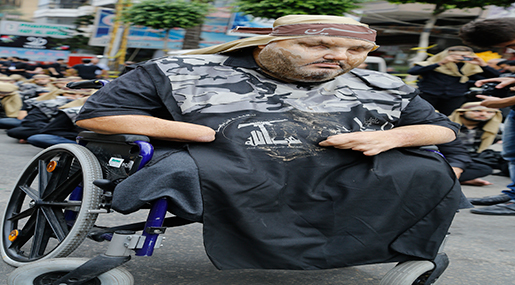
The long lines, followed by processions and many groups moving straight, not veering one inch "out of formation" with many fists, yet a single heart. A foreign correspondent failed to observe the first people arriving at the rites of the tenth of Muharram in "Dahye." He told his colleague in the studio: "I don't know where all of these people suddenly came from?" The man definitely didn't try to observe those who were last to leave the march a little before noon.
People speed up to reach the "Sayyed Shuhada Complex" without complaining about the inspection measurements they have gotten used to on such occasions. They listen to the narration of the killing of Imam Hussein bin Ali and his companions hundreds of years ago, as if it has just happened recently. One scholar participating in the ceremony comments "the occasion is becoming livelier year after year."
Tears mix with the light October drizzle on the attendants' cheeks. The voice reaches everywhere along the predesignated path of the march, and also reaches those concerned with the developments of politics and battles in the Arab world "that have become more complicated" as Sayyed Hassan Nasrallah noted on the night preceding the great assembly.
The organizers express comfort regarding the general image of the march "it is enough that the crowds be peacefully and contently organized, despite the surrounding circumstances, for the effort to be great." Hizbullah, who selected the slogan "Hussein, the Secret of our Victories," as a central title for Ashura's rites of this year, knows very well how to choose its words. Sheikh Ali Daher, Head of Hizbullah's Media Activities, notes that preparing the operation of "cooking" the occasion's central slogan happens a long time earlier. "We bear in mind the speeches of Sayyed Hassan Nasrallah, taking into consideration the current situation in the region, from which we extract the central slogan."
The organizers don't like unplanned initiatives, yet they accept "voluntary" initiatives that serve the "event", as the "Ahyu Amrana" campaign's initiative [literally meaning "Revive us"] this year as they organized three "chest beating" [Latem] processions in the march.
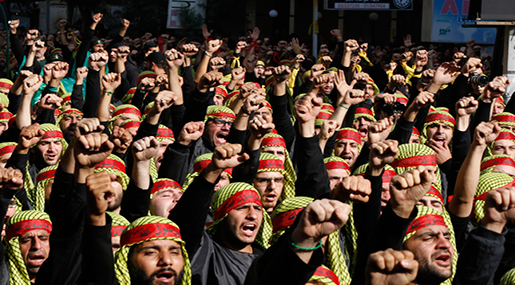
"Salman" rubs some Husseini soil on the faces of the participants in the "University Procession," which consists of private university students. Salman notes that both martyrs Jihad Moughniyyeh and Mohammad Jouni played an essential role in establishing the procession four years ago, noting that martyr Mohammad Jouni had left a special mark among his comrades in the procession. Near Salman, "Abu Sadeq" checks the names of the participants in the procession named "We came with love... on the path to al-Quds." But where does the path to al-Quds pass from?
The man answers jokingly: "Today, it will pass from here, from Hadi Nasrallah Boulevard." Abo Sadeq talks about the philosophy of the slogan, which is based on love: "Imam Hussein's revolution is of pure love of righteousness, sacrifice, passion, selflessness, Daawah, and calling for dialogue with the other, which proves it is not an exclusivist movement."
Away from the processions in the lead, one of the "organizing committee" members observes the path of the crowds in coordination with other "brothers" in several "points" within a mission that he has been introduced to twenty five years ago with a group of his comrades.
Hizbullah, which has greatly extended its organizational "body" in the past few years, is still seeking, due to the increasing burdens, to recruit more people. This is what the mission performed by members of the "recruitment committee" suggests, although they say that registering the names of those who desire is only done to "raise religious awareness..."
On the other side of the Ashura march, Fatima, a year and a half old, attended with her mother, while "her father didn't, on account of martyrdom." The mother says "we thank Allah for this honor." The ladies' crowds separated in the area of Sfeir Bridge to cut the road to reach the "Rayah" square short. There, the "Sayyed" appeared in person before the huge crowd for the second time in less than twenty four hours, greeting them for their determination and patience.
Before the end of the "rites," dozens of volunteer girls from the "al-Mahdi School - Hadath branch" were cleaning some surrounding areas from the garbage on the streets. Nadine Hammoud, a volunteer in "For Hussein" campaign, said that their campaign was also met with response from people, noting that "the campaign will expand in the next year. Is this the beginning for an "environmental movement" on the margin of the Ashura march? Why not?
Source: As-Safir, Translated and Edited by website team
Comments
